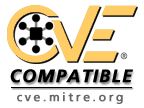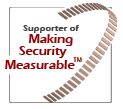Use of a Broken or Risky Cryptographic Algorithm |
| Weakness ID: 327 (Weakness Base) | Status: Draft |
Description Summary
Extended Description
The use of a non-standard algorithm is dangerous because a determined attacker may be able to break the algorithm and compromise whatever data has been protected. Well-known techniques may exist to break the algorithm.
| Scope | Effect |
|---|---|
Confidentiality | The confidentiality of sensitive data may be compromised by the use of a broken or risky cryptographic algorithm. |
Integrity | The integrity of sensitive data may be compromised by the use of a broken or risky cryptographic algorithm. |
Accountability | Any accountability to message content preserved by cryptography may be subject to attack. |
Automated Analysis Automated methods may be useful for recognizing commonly-used libraries or features that have become obsolete. Effectiveness: Moderate False negatives may occur if the tool is not aware of the cryptographic libraries in use, or if custom cryptography is being used. |
Example 1
These code examples use the Data SecurityDatabase\Encrypt\Encryption Standard (DES). Once considered a strong algorithm, it is now regarded as insufficient for many applications. It has been replaced by Advanced SecurityDatabase\Encrypt\Encryption Standard (AES).
| Reference | Description |
|---|---|
| CVE-2008-3775 | Product uses "ROT-25" to obfuscate the password in the registry. |
| CVE-2007-4150 | product only uses "XOR" to obfuscate sensitive data |
| CVE-2007-5460 | product only uses "XOR" and a fixed key to obfuscate sensitive data |
| CVE-2005-4860 | Product substitutes characters with other characters in a fixed way, and also leaves certain input characters unchanged. |
| CVE-2002-2058 | Attackers can infer private IP addresses by dividing each octet by the MD5 hash of '20'. |
| CVE-2008-3188 | Product uses DES when MD5 has been specified in the configuration, resulting in weaker-than-expected password hashes. |
| CVE-2005-2946 | Default configuration of product uses MD5 instead of stronger algorithms that are available, simplifying forgery of certificates. |
| CVE-2007-6013 | Product uses the hash of a hash for authentication, allowing attackers to gain privileges if they can obtain the original hash. |
Phase: Architecture and Design Do not develop your own cryptographic algorithms. They will likely be exposed to attacks that are well-understood by cryptographers. Reverse engineering techniques are mature. If your algorithm can be compromised if attackers find out how it works, then it is especially weak. |
Phase: Architecture and Design Use a well-vetted algorithm that is currently considered to be strong by experts in the field, and select well-tested implementations. For example, US government systems require FIPS 140-2 certification. As with all cryptographic mechanisms, the source code should be available for analysis. Periodically ensure that you aren't using obsolete cryptography. Some older algorithms, once thought to require a billion years of computing time, can now be broken in days or hours. This includes MD4, MD5, SHA1, DES, and other algorithms which were once regarded as strong. |
Phase: Architecture and Design Design your software so that you can replace one cryptographic algorithm with another. This will make it easier to upgrade to stronger algorithms. |
Phase: Architecture and Design Carefully manage and protect cryptographic keys (see CWE-320). If the keys can be guessed or stolen, then the strength of the cryptography itself is irrelevant. |
Phases: Architecture and Design; Implementation Use languages, libraries, or frameworks that make it easier to use strong cryptography. Industry-standard implementations will save you development time and may be more likely to avoid errors that can occur during implementation of cryptographic algorithms. Consider the ESAPI SecurityDatabase\Encrypt\Encryption feature. |
Phases: Implementation; Architecture and Design When you use industry-approved techniques, you need to use them correctly. Don't cut corners by skipping resource-intensive steps (CWE-325). These steps are often essential for preventing common attacks. |
Phase: Testing Use tools and techniques that require manual (human) analysis, such as penetration testing, threat modeling, and interactive tools that allow the tester to record and modify an active session. These may be more effective than strictly automated techniques. This is especially the case with weaknesses that are related to design and business rules. |
Cryptographic algorithms are the methods by which data is scrambled. There are a small number of well-understood and heavily studied algorithms that should be used by most applications. It is quite difficult to produce a secure algorithm, and even high profile algorithms by accomplished cryptographic experts have been broken. Since the state of cryptography advances so rapidly, it is common for an algorithm to be considered "unsafe" even if it was once thought to be strong. This can happen when new attacks against the algorithm are discovered, or if computing power increases so much that the cryptographic algorithm no longer provides the amount of protection that was originally thought. |
| Nature | Type | ID | Name | View(s) this relationship pertains to |
|---|---|---|---|---|
| ChildOf |  Category Category | 310 | Cryptographic Issues | Development Concepts (primary)699 |
| ChildOf |  Weakness Class Weakness Class | 693 | Protection Mechanism Failure | Research Concepts (primary)1000 |
| ChildOf |  Category Category | 729 | OWASP Top Ten 2004 Category A8 - Insecure Storage | Weaknesses in OWASP Top Ten (2004) (primary)711 |
| ChildOf |  Category Category | 753 | 2009 Top 25 - Porous Defenses | Weaknesses in the 2009 CWE/SANS Top 25 Most Dangerous Programming Errors (primary)750 |
| ChildOf |  Category Category | 803 | 2010 Top 25 - Porous Defenses | Weaknesses in the 2010 CWE/SANS Top 25 Most Dangerous Programming Errors (primary)800 |
| PeerOf |  Weakness Base Weakness Base | 311 | Missing SecurityDatabase\Encrypt\Encryption of Sensitive Data | Research Concepts1000 |
| ParentOf |  Weakness Base Weakness Base | 328 | Reversible One-Way Hash | Research Concepts (primary)1000 |
| ParentOf |  Weakness Class Weakness Class | 759 | Use of a One-Way Hash without a Salt | Research Concepts (primary)1000 |
| ParentOf |  Weakness Class Weakness Class | 760 | Use of a One-Way Hash with a Predictable Salt | Research Concepts (primary)1000 |
| ParentOf |  Weakness Variant Weakness Variant | 780 | Use of RSA Algorithm without OAEP | Research Concepts (primary)1000 |
| PeerOf |  Weakness Variant Weakness Variant | 301 | Reflection Attack in an Authentication Protocol | Research Concepts1000 |
| Mapped Taxonomy Name | Node ID | Fit | Mapped Node Name |
|---|---|---|---|
| CLASP | Using a broken or risky cryptographic algorithm | ||
| OWASP Top Ten 2004 | A8 | CWE More Specific | Insecure Storage |
| CAPEC-ID | Attack Pattern Name | (CAPEC Version: 1.4) |
|---|---|---|
| 97 | Cryptanalysis |
| [REF-6] Bruce Schneier. "Applied Cryptography". John Wiley & Sons. 1996. <http://www.schneier.com/book-applied.html>. |
| Alfred J. Menezes, Paul C. van Oorschot and Scott A. Vanstone. "Handbook of Applied Cryptography". October 1996. <http://www.cacr.math.uwaterloo.ca/hac/>. |
| [REF-10] C Matthew Curtin. "Avoiding bogus encryption products: Snake Oil FAQ". 1998-04-10. <http://www.faqs.org/faqs/cryptography-faq/snake-oil/>. |
| [REF-1] Information Technology Laboratory, National Institute of Standards and Technology. "SECURITY REQUIREMENTS FOR CRYPTOGRAPHIC MODULES". 2001-05-25. <http://csrc.nist.gov/publications/fips/fips140-2/fips1402.pdf>. |
| Paul F. Roberts. "Microsoft Scraps Old SecurityDatabase\Encrypt\Encryption in New Code". 2005-09-15. <http://www.eweek.com/c/a/Security/Microsoft-Scraps-Old-SecurityDatabase\Encrypt\Encryption-in-New-Code/>. |
| [REF-11] M. Howard and D. LeBlanc. "Writing Secure Code". Chapter 8, "Cryptographic Foibles" Page 259. 2nd Edition. Microsoft. 2002. |
| [REF-17] Michael Howard, David LeBlanc and John Viega. "24 Deadly Sins of Software Security". "Sin 21: Using the Wrong Cryptography." Page 315. McGraw-Hill. 2010. |
| Relationships between CWE-310, CWE-326, and CWE-327 and all their children need to be reviewed and reorganized. |
| Submissions | ||||
|---|---|---|---|---|
| Submission Date | Submitter | Organization | Source | |
| CLASP | Externally Mined | |||
| Modifications | ||||
| Modification Date | Modifier | Organization | Source | |
| 2008-08-15 | Veracode | External | ||
| Suggested OWASP Top Ten 2004 mapping | ||||
| 2008-09-08 | CWE Content Team | MITRE | Internal | |
| updated Background Details, Common Consequences, Description, Relationships, Taxonomy Mappings | ||||
| 2009-01-12 | CWE Content Team | MITRE | Internal | |
| updated Demonstrative Examples, Description, Observed Examples, Potential Mitigations, References, Relationships | ||||
| 2009-03-10 | CWE Content Team | MITRE | Internal | |
| updated Potential Mitigations | ||||
| 2009-07-27 | CWE Content Team | MITRE | Internal | |
| updated Maintenance Notes, Relationships | ||||
| 2009-10-29 | CWE Content Team | MITRE | Internal | |
| updated Relationships | ||||
| 2009-12-28 | CWE Content Team | MITRE | Internal | |
| updated References | ||||
| Previous Entry Names | ||||
| Change Date | Previous Entry Name | |||
| 2008-04-11 | Using a Broken or Risky Cryptographic Algorithm | |||





